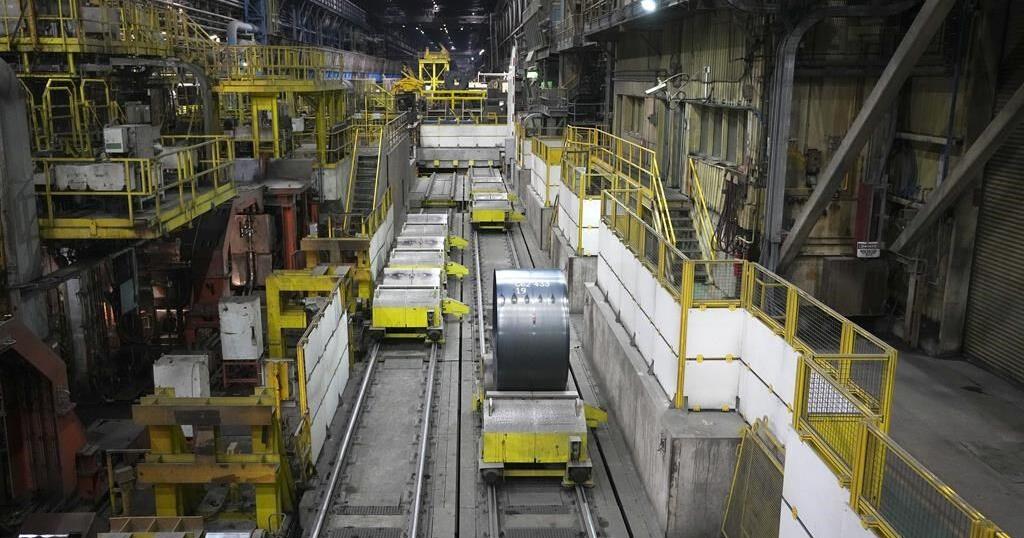WASHINGTON, Jan. 5 (Xinhua) — U.S. economic growth is expected to slow down in 2022 amid the rapid spread of the Omicron variant and a reduction in fiscal and monetary policy support, economists said. The following are the five issues that pose looming uncertainties on the U.S. economy in 2022.
IMPACT OF OMICRON VARIANT
The Omicron variant has the potential to drag on U.S. economic growth in 2022, as the Delta variant did in 2021.
“Omicron could delay the timeline for some people feeling comfortable returning to work and cause worker shortages to linger somewhat longer,” Goldman Sachs economist Jan Hatzius has recently said.
He has lowered U.S. GDP forecast for the first quarter of 2022 to 2 percent, down from a previous forecast of 3 percent.
“The bulk of the economic consequences with regard to the winter wave are expected to show up in late December and January. The first quarter of 2022 is the most vulnerable to weakness,” said Diane Swonk, chief economist at major accounting firm Grant Thornton.
Federal Reserve officials projected the U.S. economy would grow at 4 percent in 2022, down from 5.5 percent in 2021.
However, in the worst scenario, if the Omicron variant poses increased health risks, reduces vaccine efficacy and leads to renewed restrictions, growth could fall below 2 percent in 2022, according to Oxford Economics.
SOARING INFLATION
The U.S. consumer price index (CPI) rose 6.8 percent in the 12-month period ending in November 2021, the fastest annual pace in almost 40 years, according to the U.S. Labor Department.
Economists at Wells Fargo Securities expected headline CPI to peak on a year-ago basis at about 7 percent in the first quarter of 2022. As supply chain bottlenecks gradually ease and consumer spending shifts back toward services, they believed U.S. inflation is expected to subside over the second half of 2022.
“We think by the end of 2022 inflation will be back below 3 percent,” said Ethan Harris, head of global economics at Bank of America Global Research, adding that the forecast is still higher than the Federal Reserve’s target of 2 percent.
According to a recent survey released by the National Association for Business Economics, most economists believed U.S. inflation will remain above the central bank’s target over the next three years amid rising wages and strong demand for goods and services.
TIGHTENED MONETARY POLICY
In a bid to tackle soaring inflation, the Federal Reserve is on track to end its asset purchase program by March while projecting three interest rate hikes in 2022, as it exits from the ultra-loose monetary policy enacted at the start of the pandemic.
Fed officials’ median interest rate projections released in December showed that the central bank could raise the federal funds rate — the benchmark interest rate — three times in 2022 from its current record-low level of near zero.
“By June, perhaps as early as March, the Fed will be ready to start raising interest rates,” Harris said.
“But if inflation sticks at higher levels, then you have a very different Federal Reserve. And for the first time in decades, you’ll have a Fed that is battling inflation. And you can’t fight inflation without hurting the economy,” he added.
Economists at Wells Fargo Securities believed that the Fed would announce its first rate hike in the third quarter of 2022, followed by another rate hike in the fourth quarter.
LOW LABOR FORCE PARTICIPATION
As of November 2021, the unemployment rate fell by 0.4 percentage points to 4.2 percent, but job growth is still 4 million below its pre-pandemic level, according to the U.S. Labor Department.
The unemployment rate is expected to fall back to 3.5 percent by the end of 2022, according to Mark Zandi, chief economist of Moody’s Analytics.
However, labor force participation is unlikely to return to its pre-pandemic level as some workers have permanently left the workforce during the pandemic to retire.
Economists at Oxford Economics expected the labor force participation rate to rise from the current 61.8 percent to around 62.6 percent in the forth quarter of 2022, still below its pre-pandemic level of 63.3 percent.
WILL BIDEN’S SOCIAL SPENDING BILL PASS?
Democrats have encountered a major setback as Joe Manchin, a moderate Democratic senator from West Virginia, announced in December that he will not vote for President Joe Biden’s social spending and climate bill, known as the Build Back Better (BBB) Act.
The bill seeks to impose new taxes on the largest corporations and the wealthiest Americans to generate 2 trillion U.S. dollars for social spending and climate issues.
“Instead of abandoning BBB altogether, perhaps Democrats in Congress and the Biden administration will return in January and attempt to slim down the package while making all the policies that remain permanent,” said Michael Pugliese and Karl Vesely, economic analysts at Wells Fargo Securities.
The Conference Board, a New York-based global business membership and research association, projected that U.S. economic growth would be 3.5 percent in 2022 if the BBB bill is not incorporated into its forecast.
If the version of the bill reviewed by the Congressional Budget Office is passed and implemented in the first quarter of 2022, U.S. economic growth for the whole year would rise an additional 0.4 percent, the Conference Board said. Enditem
Adblock test (Why?)

Source link
Related
























